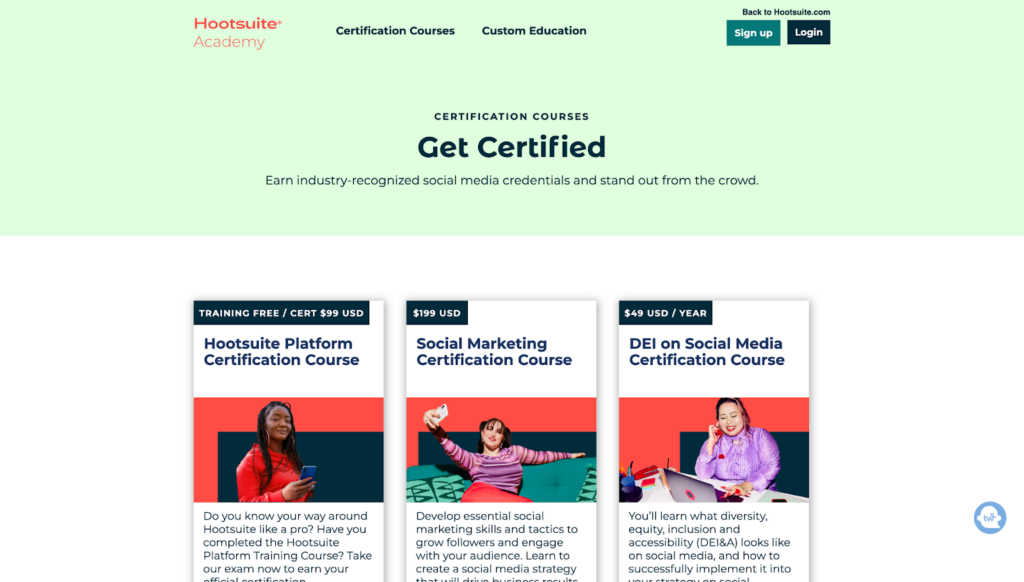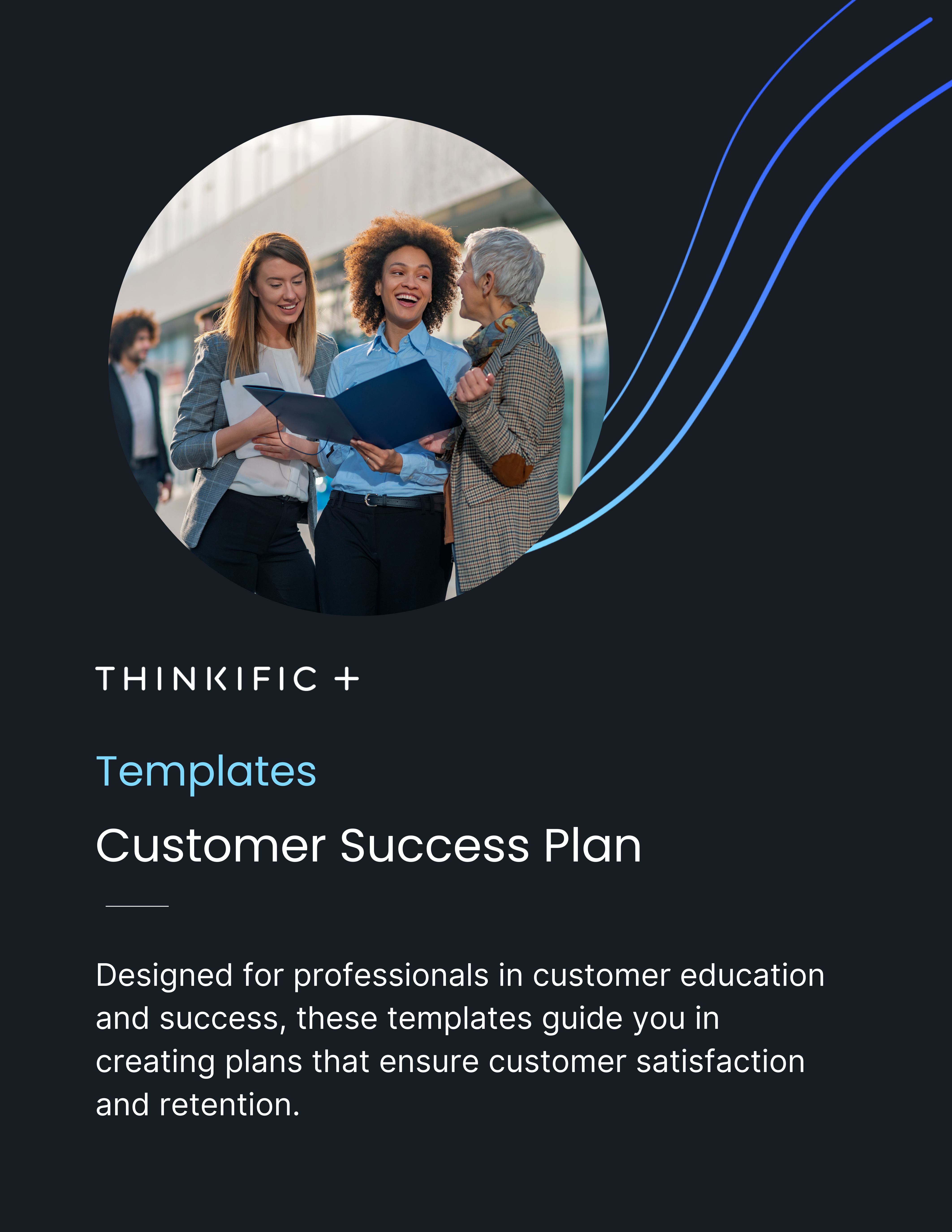The profitability and longevity of your business depend largely on your customers being able to achieve their goals with your product. To help them do that, you have to anticipate their questions and challenges, and offer answers and solutions. This is known as customer success.
Unlike customer support which aims to resolve customers’ short-term issues, customer success caters to customers for the long term. This involves identifying the identical elements in each customer’s lifecycle, which makes it easy to predict your customers’ needs and take a preventative approach to ensure successful product usage.
Customer success, while essential, can be hard to do, especially if you have many customers. However, documenting the steps your customer success reps/managers make helps you ensure that each customer derives value from your product.
In this article, we’ve created some customer success plan templates you can use to get started. You’ll also learn why structured planning is important in customer success, the best practices for using customer success plan templates, and some additional resources/tools for customer success planning.
Skip ahead:
- Understanding customer success plan templates
- Types of customer success plan templates
- Best practices for using customer success plan templates
- Additional resources and tools for customer success planning
- Boost customer satisfaction with customer success plan templates
Understanding customer success plan templates
Structured planning in customer success is the systematic and organized approach you can take to anticipate, meet, and exceed customer needs and expectations. It involves developing a clear roadmap to ensure that customers derive maximum value from your product or service throughout their entire journey.
This roadmap is called a customer success plan — a tool that outlines the actions your customer success reps/manager has to take to develop long-term relationships with your customers and help them reach their goals.
Customer success plans play a pivotal role in ensuring customer satisfaction, building long-term relationships, reducing churn, increasing upsell and cross-sell opportunities, and boosting net revenue generation. Documenting customer success actions in these plans helps:
- Customer success reps understand the customers’ journeys, preferences, and unique challenges. This understanding is crucial for providing personalized and effective support;
- Prevent the loss of critical institutional information when employees leave or move to different roles;
- Maintain consistency in customer interactions. When different reps handle the same customer or similar issues, having a documented history ensures that the approach and information shared are consistent;
- Team members collaborate smoothly with one another. If multiple reps are working with the same customer, a documented history allows for seamless handovers and ensures that everyone is on the same page;
- Ensure that the customer success team can efficiently manage a larger number of accounts without sacrificing the quality of interactions;
- Provide new customer success hires with insights into how previous situations were handled and offer a foundation for developing their own customer interaction skills;
- CSMs assess how effectively reps are addressing customer needs, meeting goals, and adhering to established processes;
- CSMs identify patterns, common issues, and areas for improvement. This allows them to refine processes, update training materials, and enhance overall customer success strategies.
Customer success plans are applicable to many business instances, including customer onboarding/offboarding, customer reactivation, and product renewals, to mention a few. Using customer success plan templates makes it easy to customize a plan for each unique scenario. With templates, you can:
- Clearly define your customers’ goals and objectives in using your product or service;
- Identify specific milestones that indicate progress toward achieving your customers’ goals;
- Define success criteria to measure the effectiveness of your product or service;
- Outline the specific actions your customer success team will take to reach the defined milestones;
- Establish a communication plan that helps you check in regularly with your customers to address their concerns and gather insights;
- Define key performance indicators (KPIs) to track and measure success;
- Monitor metrics related to customer satisfaction, product usage, and other relevant factors.
Types of customer success plan templates
Here’s a breakdown of the different types of customer success plan templates you can use to help your customers derive maximum value from your product/service:
Quarterly Business Review (QBR) meeting template
A Quarterly Business Review (QBR) template is a structured outline that helps you conduct comprehensive reviews of your performance, goals, and strategies on a quarterly basis. A well-structured QBR meeting template contains components like:
- Client/customer information;
- Performance metrics;
- Challenges and solutions;
- Next quarter objectives;
- Action steps, etc.
In a typical QBR, the CSM:
- Assesses the company’s overall performance against established goals and metrics;
- Reviews and adjusts strategic plans based on market changes and business performance;
- Analyzes customer feedback and discusses strategies for enhancing customer satisfaction;
- Reviews both open and closed support tickets over the last quarter;
- Evaluates financial health, revenue growth, and cost management;
- Recognizes and celebrates individual and team achievements;
- Set clear and measurable goals for the upcoming quarter that align with the company’s vision;
- Ensure alignment and coordination between different departments and teams;
- Discuss employee feedback and strategies for enhancing team engagement and morale.
Quarterly success plan template
A quarterly success plan template is a structured document that outlines the goals, activities, and strategies you plan to implement over a span of three months to ensure the satisfaction and success of your customers. A good quarterly success plan template includes components like:
- Customers’ goals and objectives;
- Key milestones (with deadlines) that indicate progress toward customers’ goals;
- Action plans to help you reach defined milestones;
- KPIs and metrics to track and measure success;
- Resources needed to help customers succeed, etc.
Here are some tips to use the quarterly success plan template effectively:
- Tailor the template to each customer’s unique goals and needs;
- Involve key stakeholders, including the customer(s) and your team, in the creation of the success plan to ensure alignment;
- Use the plan as a living document and encourage regular updates as needed throughout the quarter;
- Regularly monitor progress and analyze metrics to assess the effectiveness of your strategies;
- Acknowledge and celebrate achievements and milestones with the customer, fostering a positive and collaborative relationship;
- Conduct a thorough review at the end of the quarter to assess overall success, identify areas for improvement, and inform future planning.
Annual customer success plan template
An annual customer success plan template is a comprehensive document that outlines the strategies you plan to implement over the course of a year to ensure that your customers get maximum value from your product and achieve their goals.
This template provides a structured framework for both you and your customers to collaboratively work towards achieving long-term objectives. It also helps you align yearly objectives with your overall business strategy.
The key components of an annual customer success plan include:
- Your broad objectives for the year;
- The long-term goals your customers aim to achieve over the course of a year;
- The strategies you’ll implement to achieve these goals and objectives;
- The resources you’ll need to help the customer succeed;
- Your check-in dates (they could be quarterly or bi-annual), etc.
Long-term planning is important for customer success because it:
- Ensures that customer success efforts are aligned with the broader strategic goals of both your company and your customers;
- Allows you to maximize the long-term value that customers derive from your product or service;
- Enables you to identify potential issues or challenges in advance, allowing for proactive resolution and risk mitigation;
- Helps you foster stronger relationships with customers as you demonstrate a commitment to their long-term success;
- Provides opportunities for continuous improvement as you’re able to learn from successes and failures over an extended period;
- Helps reduce churn, increase customer retention rates, and build customer loyalty as you address issues and ensure ongoing value;
- Allows for better resource planning and allocation, ensuring that the necessary support is available to customers when needed;
- Allows for the collection and analysis of data over a longer timeframe, which helps you make data-driven decisions;
- Contributes to upselling and cross-selling opportunities, which drives revenue growth from existing customers.
Weekly success plan template
A weekly success plan template allows you to outline the goals, tasks, and priorities for an individual rep or a team on a weekly basis. This template serves as a proactive tool to help you plan and organize smaller activities, track progress, and ensure that short-term goals/objectives are met within a specified timeframe.
The components of a weekly success plan template include:
- The goals you want to achieve during the week;
- The main tasks to do to achieve the aforementioned goals;
- The priority levels for each of the tasks;
- A section to track progress on each task throughout the week;
- A section to schedule and document any important meetings, appointments, or deadlines;
- A daily schedule to allocate time blocks for different tasks and activities, etc.
Organizing your weekly customer success plans has many benefits. It:
- Provides clarity on weekly objectives, ensuring that efforts are focused on high-priority tasks;
- Helps you allocate time effectively by creating a schedule and setting realistic deadlines;
- Ensures that weekly goals align with broader company/customer objectives;
- Facilitates better communication within teams by aligning everyone on weekly priorities;
- Reduces stress as you break down tasks into manageable steps and provide a clear action plan.
Client onboarding success plan template
A client (or customer) onboarding success plan template shows the process involved in onboarding a new client successfully. It helps businesses ensure a smooth and effective transition for clients/customers from the initial stages of engagement to becoming fully integrated and satisfied with the product.
The key components of a client onboarding success plan template include:
- An overview of the onboarding process;
- Details about the client, including key contacts, industry, and specific business needs;
- Clearly defined goals for the onboarding process;
- Key milestones and deadlines for each phase or stage of the onboarding process;
- KPIs to measure the success of the onboarding process, etc.
Using a client onboarding success plan template ensures that:
- There’s a standardized and consistent onboarding process for all clients;
- Clients know what to expect during the onboarding process;
- Clients have the knowledge, resources, and support they need to effectively use the product or service;
- Clients start realizing value from the product or service more quickly (i.e. low time to value);
- There’s a scalable framework for onboarding as the business grows, making it easier to manage increased client volume;
- The likelihood of client dissatisfaction or frustration is reduced, which results in lower churn rates.
Customizable fillable templates
The five templates outlined above aren’t the only kinds of customer success plan templates there are. Because so much goes into ensuring that customers reach their goals, there are other templates you can personalize for specific needs.
The features of customizable templates include:
- Editable content. You can modify content according to your needs, including text, images, and other elements.
- Flexible structure. You can add, remove, or reposition sections based on your needs, allowing you to tailor a template to different purposes.
- Placeholder elements. Customizable templates may have placeholder elements that guide you on where to insert specific content. You can replace these placeholders with your own text or media.
- Customizable color schemes and fonts. You can change the color scheme, fonts, and overall style of the template the match your brand colors, fonts, and style.
- Export formats. Customizable templates typically support various export formats, including PDF, Word, or image files, which give you flexibility in how the final content is shared or distributed.
Here are some situations where you can use customizable fillable templates:
- Sales-to-success handoffs. If your sales team is the first to speak to prospective customers, it will likely have a relationship with them before customer success takes over. A customizable success plan template allows the sales team to document all they’ve learned from your customers, which makes it easier for the customer success team to take over.
A sales-to-success handoff template should include the customer’s basic information, their main objective(s), their budget, how they heard about the company, their preferred communication method, follow-up actions, and KPIs to measure the performance of the product.
- Customer reactivation. Sometimes, your customers may stop using your product abruptly, especially if you’re a subscription-based SaaS business. In this case, you need a specified process to reactivate them.
You can outline this process in a customer reactivation template, with steps like checking for unresolved issues, reviewing the customer’s usage contact, verifying the customer’s contact, following up with the customer to find out why they went silent, reviewing any issues or challenges the customer has, sending a follow-up email, and a simple reboarding process.
- Customer renewals. While renewals are an automatic process for subscription-based SaaS companies, some companies let their customer success teams handle renewals, especially if the customer is an enterprise or if they’re hiring for a service. If that’s you, you can use a customizable template to outline a simple renewal process with steps like checking for (and resolving) any open issues, setting up a meeting with the customer to confirm expectations and discuss new product features, if any, and the filling of renewal paperwork.
- Customer offboarding. A customer leaving your company can offer a valuable learning experience and an opportunity to part ways without burning bridges. Your customer success team will need a documented process to identify why the customer doesn’t want to do business with you anymore and use that data to decrease churn in the future.
A customer offboarding template should cover things like the reason(s) the customer is leaving, what your company could do better, the parts of the contract that were broken by either party (if applicable), incentive(s) to retain the customer, collection of last payment, and a final thank-you to the customer for working with your company.
Best practices for using customer success plan templates
Here are a few practical tips for using customer success plan templates:
- Set SMART goals. SMART stands for Specific, Measurable, Achievable, Relevant, and Timebound. When setting goals for your customer success processes, be it for client onboarding/offboarding, reactivation, renewals, or quarterly business reviews, ensure that your goals meet these criteria. This clarity will make it easier to track progress.
- Communicate and collaborate clearly. As you fill in your customer success plan templates, communicate and collaborate with relevant stakeholders from both your team and the customer’s organization (if applicable). This transparency builds trust, ensures alignment, and helps manage expectations.
- Define actionable steps. Break down your goals into actionable steps and tasks. This makes it easy for both your team and your customer to understand what needs to be done. If any challenges arise, clearly outline the strategies for addressing them.
- Do regular reviews and updates. Schedule regular reviews of your customer success plans to ensure that they’re still relevant. Update the plans based on changes in your customers’ business, goals, or market conditions.
- Collect feedback from your customers. Feedback mechanisms like Customer Satisfaction Score (CSAT) and Net Promoter Score (NPS) can help you understand what’s working and what isn’t. You can also collect in-app feedback or conduct 1-on-1 interviews with your customers to get feedback on the efficacy of your processes.
- Quantify success metrics. Clearly define the customer success metrics and KPIs you’ll use to measure progress. Quantifiable data makes it easier to assess success.
Additional resources and tools for customer success planning
Customer success plan templates are just one tool to help you give your customers the best experience you possibly can. Here are some additional resources and tools you can use to improve your efforts:
Customer education platforms
Customer education platforms allow you to create an online academy filled with structured, accessible learning resources for your customers. These courses enhance their understanding of and proficiency with your product or service, leading to increased customer satisfaction.
An online academy also cultivates a continuous learning environment, allowing customers to stay updated on product updates, new features, and best practices. This ongoing education contributes to customer retention and loyalty, as users feel supported and engaged with your product.
A great example of an online academy is Hootsuite Academy.

This academy offers several certification courses taught by industry experts to help customers improve their social media skills, grow their audience, run successful ad campaigns, and use the Hootsuite platform like a pro.
Another example is Chargebee’s Subscription Academy, which has online courses that aim to teach customers all things SaaS — from pricing and analytics to BillingOps and churn.

Both of these online academies were created with Thinkific Plus, a powerful tool with robust features that allow you to create and ship specialized training programs for your customers. With Thinkific Plus, you can create online courses, microlessons, and even cohort classes, to help your customers get more familiar with your product and the industry at large — which, in turn, improves customer satisfaction and retention.
Customer relationship management systems
Customer Relationship Management (CRM) platforms provide an organized and unified system for managing customer interactions, data, and relationships. In this dynamic hub, customer success teams can store, track, and analyze customer information, from contact details to historical interactions and preferences.
By centralizing customer data, CRM platforms break down silos and facilitate communication among sales, marketing, and support teams. This cross-functional collaboration ensures that every touchpoint in the customer lifecycle is well-coordinated and aligned with overarching business objectives.
With features like automated workflows and customer segmentation, CRM platforms enable customer success teams to tailor their strategies, anticipate needs, and provide a more personalized and proactive approach to customer support.
Examples of CRM platforms include:
Customer feedback and survey tools
Customer feedback and survey tools allow customer success teams to communicate directly with customers, and capture valuable insights regarding customer pain points, product or service satisfaction, and overall expectations.
By gathering quantitative metrics such as Net Promoter Scores (NPS) and Customer Satisfaction (CSAT), alongside qualitative feedback, customer success teams get a better understanding of customer sentiment. This, in turn, makes it easier to address specific pain points, identify areas for improvement, and tailor strategies to align with the evolving needs and preferences of their customer base.
Customer feedback and survey tools include:
Project management tools
Project management tools provide a structured and organized framework for customer success teams to efficiently execute and manage initiatives that contribute to customer satisfaction. These tools offer a centralized platform where customer success teams can plan, track, and collaborate on various tasks and projects related to customer onboarding, support, and engagement.
With features like task assignment, deadlines, and progress tracking, project management tools enable clear communication and collaboration among team members, ensuring that everyone is aligned on goals and timelines. This transparency not only enhances internal coordination but also allows for proactive communication with customers, providing them with visibility into the status of ongoing projects and reinforcing a sense of partnership.
Examples of project management tools include:
Collaboration platforms
Collaboration tools foster seamless communication and collaboration among team members and clients. For example, Slack has real-time messaging and collaboration features, which enable instant communication, file sharing, and the creation of dedicated channels for specific projects or client interactions. This ensures that customer success professionals can quickly address queries, share insights, and coordinate efforts, leading to swift issue resolution and a more agile response to customer needs.
Another example of a collaboration platform is Zoom, a video conferencing platform that facilitates face-to-face meetings, webinars, and training sessions. Zoom allows customer success teams to conduct personalized and interactive sessions with clients, fostering a stronger connection and understanding.
Collaboration platforms that help customer success teams communicate with one another and work seamlessly together include:
Customer journey mapping tools
Customer journey mapping tools provide a visual representation of the entire customer experience, from initial contact through post-purchase engagement. This allows businesses to understand and empathize with the customer’s perspective, uncover pain points, and identify opportunities for improvement at each touchpoint in the journey.
By identifying critical moments in the customer journey, teams can implement targeted strategies to address potential issues, enhance satisfaction, and guide customers toward successful outcomes.
The visual representation of customers’ journeys also fosters cross-departmental collaboration, aligning sales, marketing, and support teams toward a unified goal of delivering a positive and cohesive customer experience.
Examples of customer journey mapping tools include:
Email marketing platforms
Email marketing platforms are a powerful tool for personalized communication, engagement, and relationship-building throughout the customer lifecycle. These platforms enable your customer success team to deliver targeted and relevant content (product updates, special offers, and valuable resources) directly to customers’ inboxes, facilitating ongoing communication and relationship-building.
Email marketing tools also allow customer success teams to design automated email sequences that guide customers through onboarding processes, provide educational content, and offer timely support. This ensures that customers receive the right information at the right time, enhancing their understanding of your products/services and encouraging active engagement.
By tailoring messages based on customer preferences, behavior, and lifecycle stage, email marketing platforms help build a more personalized and meaningful connection, which results in enhanced customer satisfaction and loyalty.
Email marketing platforms include:
Knowledge base platforms
Knowledge base platforms can help you create a centralized and accessible repository of information, resources, and self-service tools that empower customers to find answers and solutions independently. With these tools, you can provide a comprehensive library of articles, tutorials, FAQs, and guides on your website for customers seeking information about your products, services, or common issues.
Knowledge base platforms also play a huge role in customer education and onboarding as they provide a structured and scalable way to deliver training materials, product documentation, and best practices, ensuring that customers have the resources they need to maximize the value of their purchase.
By enabling customers to self-serve and troubleshoot, knowledge base platforms facilitate faster issue resolution, reducing the need for direct support interactions and enhancing the overall customer experience.
Examples of knowledge base platforms include:
- Helpjuice
- Help Scout
- Gainsight (formerly Insided)
- Zendesk Guide
Boost customer satisfaction with customer success plan templates
The templates in this blog post provide a structured framework for customer success teams to navigate the intricacies of each unique customer journey. With these templates, your team can proactively address challenges and deliver personalized experiences that resonate with the diverse needs of your customer base.
Consider Thinkific Plus to create an online academy for your customers and streamline your customer success.
It’s a powerful, yet easy-to-use, platform that helps you attract new customers and retain existing ones through customer education.
With Thinkific Plus, you can deliver comprehensive learning experiences that teach your customers how to derive value from your product or service. Not only does this platform have advanced analytics and reporting features to help you track your impact, but it’s also designed to scale with you as your customer education programs evolve.







